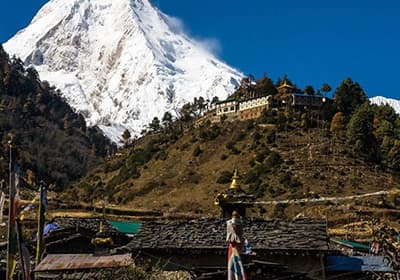Top 12 Festivals in Nepal
Nepal, renowned not only for its towering mountains, including Mount Everest, but also for its rich tapestry of festivals and cultures, is a captivating destination. Nestled among the high mountains and scenic hills, this beautiful country is a treasure trove of cultural diversity.
In Nepal, you'll discover a vivid kaleidoscope of religions, civilizations, ethnicities, and languages. It's a land where traditions are celebrated with great fervor, and every visit during its numerous festivals offers a unique window into the heart of Nepalese culture and customs.
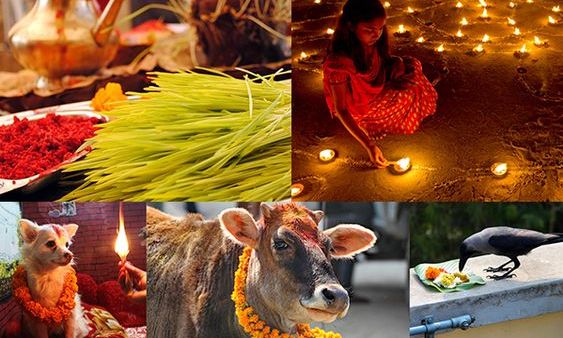
Nepal's festivals, deeply rooted in tradition, follow the lunar calendar of the country. With approximately 50 festivals celebrated each year, these events hold immense religious and historical significance. Many of these festivals pay homage to revered Hindu and Buddhist deities, weaving a spiritual thread through the country's vibrant culture.
Festival Tours in Nepal provide an opportunity to immerse yourself in this dynamic culture. These journeys allow you to delve deeper into Nepal's social, customary, and regional uniqueness. Each festival is a momentous occasion, treasured by all Nepalese people, and a chance for visitors to be a part of this cultural richness.
Nepali New Year /Bisket Jatra
The Nepali New Year, which aligns with the middle of April on the Nepali Lunar calendar, represents a fresh beginning, an opportune time for setting new objectives and resolutions. However, this auspicious time isn't just about the New Year; it's also when the vibrant Bisket Jatra comes to life.
Bisket Jatra is a spectacular, weeklong annual celebration held in various areas across Nepal, including Dhapasi, Thimi, Bhaktapur, Tokha, and more. This grand event spans nine days and culminates on the 14th of April, captivating locals and visitors alike with its magnificent procession of chariots being meticulously crafted.
At the heart of Bisket Jatra, two majestic chariots take center stage, symbolizing revered deities: the goddess Bhadrakali and the formidable god Bhairav. However, due to the intricacies of astronomical positions and the lunar calendar, the festival's timing may vary slightly from year to year.

Bisket Jatra is also often referred to as the "Festival of the Serpent's Death," a title steeped in ancient folklore and tradition. During this festival, locals participate in offerings of food and prayers, seeking protection from impending problems and calamities in the future.
One of the most captivating and, for some, daring aspects of Bisket Jatra is the practice of tongue-piercing by the people of Thimi. This religious act adds a unique dimension to the celebration, making it a remarkable "tongue-piercing festival."
Legend has it that centuries ago, a princess faced a fateful curse on her wedding bed. However, destiny took a different turn as she found love in a prince blessed by the Goddess herself. To commemorate the serpents' demise, a tall pole adorned with embroidered cloth, resembling snakes, stands tall in Lyasinkhel. The pole stands as a poignant symbol of this festival, celebrated by the locals as a joyful New Year's celebration, blending tradition, myth, and community spirit in a grand spectacle
Solar Calendar- April - May
Nepali Lunar Calendar - Baisakh
Buddha Jayanti (Birthday of Lord Buddha)
Buddha Jayanti holds a place of great significance and reverence among the Nepali people, particularly within the Buddhist communities across the nation. This reverence is deeply rooted in the fact that Nepal is not just any land; it is the birthplace of Lord Buddha, known as Siddhartha Gautam.
The celebration of Buddha Jayanti resonates through every corner of the country, marking the birthday of the revered Gautam Buddha, who came into the world in 543 BC in Kapilvastu, Nepal. In the realm of Buddhist culture, this day stands as the holiest of holy days.
The auspicious occasion of Buddha Jayanti unfolds on the full moon day of Baisakh, the first month of the Nepali lunar calendar, typically falling between the months of April and May on the Gregorian calendar. This particular full moon of Baisakh holds profound significance as it commemorates three essential events: the birth of Buddha, the day he attained enlightenment, and his ultimate journey to Nirvana.

Devotees hailing from all corners of Nepal come together to participate in this sacred celebration. They kindle butter lamps at significant religious sites, including Lumbini (the very birthplace of Buddha), Boudhanath, Swayambhunath, and others, creating a luminous spectacle that signifies enlightenment.
Among these destinations, Lumbini emerges as the epicenter of devotion during Buddha Jayanti. In recent years, the number of pilgrims flocking to Lumbini has surged, with approximately 2.5 million people making the pilgrimage in 2017 alone. This number continues to grow, testifying to the enduring spiritual significance of Lord Buddha's birthplace and the universal appeal of Buddha Jayanti as a celebration of enlightenment, peace, and unity.
Solar Calendar- May-June
Nepali Lunar Calendar - Jestha
Janai Purnima (Raksha Bandhan)
Janai Purnima/ Raksha Bandhan is one of the major festivals celebrated in Nepal by the Hindu people. This festival falls in the month between Shrawan and Bhadra. On this auspicious full moon day, Hindu men, mainly Brahmins and Chettris, renew their holy thread called 'Janai’ and wrap it around their bodies. The Janai teaches the child how to be masculine and how to follow the faith and way of life with zeal. Following a holy event known as Bratabandha, Hindu males began wearing this thread. Janai should be worn for the rest of one's life, and the mantra should be uttered daily. Janai is thought to be the picture of the body, speech, and mind. The Janai signifies that the knots have been knotted and that the individual has gained mastery over them.
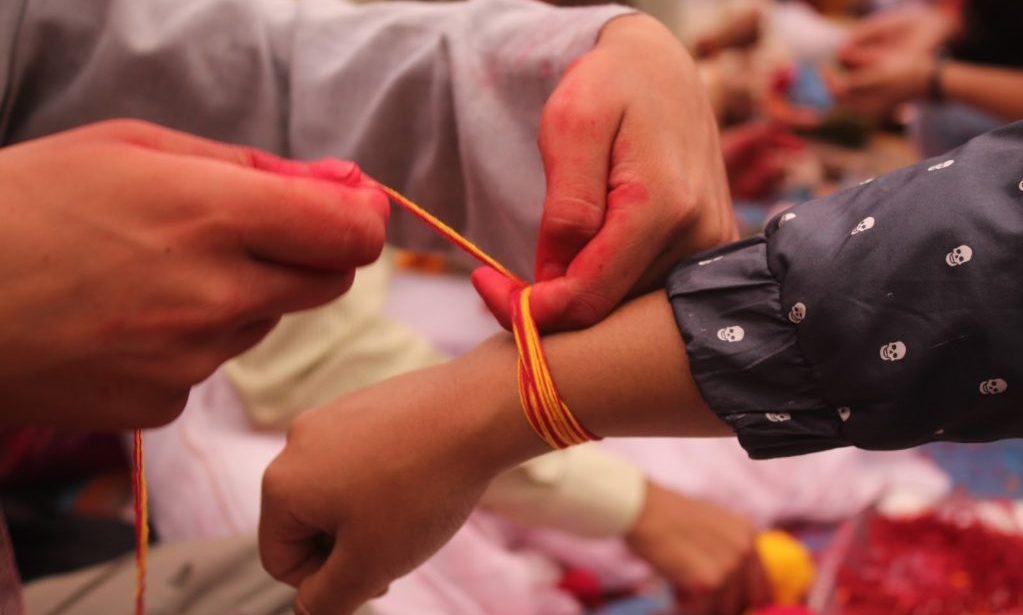
This day is also known as Raksha Bandhan. Bandhan is a bond, while Rakshya means to protect. Rakshya Bandhan is a security obligation. Every sister ties a thread called ‘Rakhi’ on their brother's hand and The ritual of Rakshya Bandhan involves preachers wearing sacred strings around their wrists while reciting the mantra:
"एन बद्धु बलि राजा दानबिन्द्रो महावल
तेन त्वं बध नामी रक्षे मा चल मा चल"
Importance of the Mantra:
"I tie the Raksha that was tied on the King of Evil Spirits "Bali", on you (the devotee).
Oh Raksha, in this manner! Always remember to keep this devotee safe."
Families come together on this joyous occasion, sharing a delightful meal of sprouted lentils known as 'Kwati.' Laughter fills the air as they celebrate their bond.
In addition to these heartwarming traditions, devotees throng to Shiva temples, and a grand Mela (fair) unfolds in various holy locations, such as Gosaikunda near Rasuwa, attracting a multitude of pilgrims. Janai Purnima / Raksha Bandhan is a festival that beautifully combines spiritual devotion with the celebration of cherished familial ties, all under the radiant glow of the full moon.
Solar Calendar- July- August
Nepali Lunar Calendar - Shrawan
Gai Jatra (Cow Festival)
Gai Jatra, also known as the Cow Festival, is a vibrant Nepali celebration that commences the day following the full moon in the Nepali month of Shrawan and extends into the month of Bhadra. This unique festival serves as a poignant remembrance of departed family members from the preceding year.
As one of Nepal's most renowned festivals, Gai Jatra is a delightful blend of various emotions—humor, parody, satire, jokes, and subtle undertones of melancholy. It's a joyous occasion observed not only in the capital, Kathmandu, but also in other culturally rich cities like Bhaktapur, Patan, and across different regions of Nepal
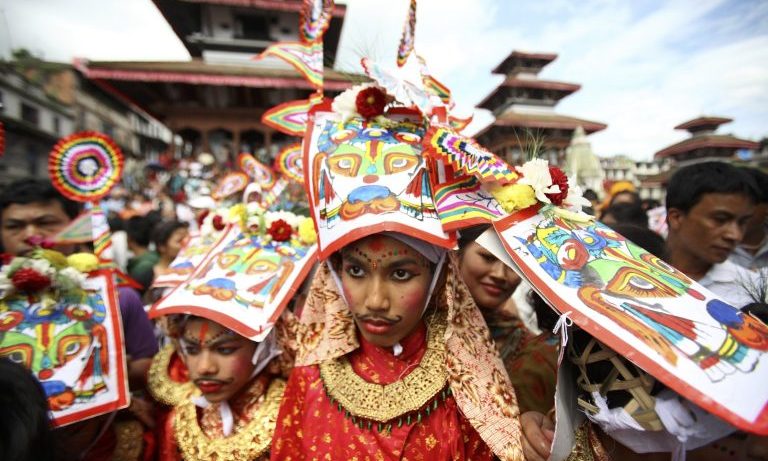
Gai Jatra traces its origins back to the time of the Malla Kings. According to local folklore, during a period of intense grief when a Malla queen mourned the loss of her son, the king devised a procession comprising people who had also experienced the pain of losing loved ones. This procession aimed to console the grieving queen, conveying that she was not alone in her sorrow. Over time, Gai Jatra has evolved into one of Nepal's most cherished and widely celebrated festivals.
Intriguingly, according to Newar tradition, the cow is believed to guide the departed souls to Yama, the god of the underworld. Capturing the tail of a cow during Gai Jatra is thought to facilitate the departed's journey to the afterlife. Therefore, on this day, cows are led through the bustling streets and narrow alleys of Nepal, and children often join the festivities by dressing up as cows. The streets of Kathmandu, Bhaktapur, and Patan come alive with a fascinating array of sights and sounds during this colorful festival, offering a unique and unforgettable cultural experience
Solar Calendar- August- September
Nepali Lunar Calendar - Bhadra
Indra Jatra/ Kumari Jatra/ Yenya Parabha
Indra Jatra, also known as Yenya Parabha, is an eight-day festival held in the month of September and is one of the most cherished traditional festivals in Kathmandu of the Newari community. This festival is celebrated to honor Lord Indra, the “GOD OF RAIN” and “HEAVEN”. He is revered by both Hindus and Buddhists equally.
The festival begins with the construction of a pine-wood pole in Basantapur Durbar Square, in front of the historic Hanuman Dhoka Palace. The pole-raising ritual attracts hundreds of people to the Durbar Square area. Kumari's chariot, the Living Goddess, is paraded through Kathmandu's principal avenues. Every night, masked performers with loud drums stampede through known as Lakhay.
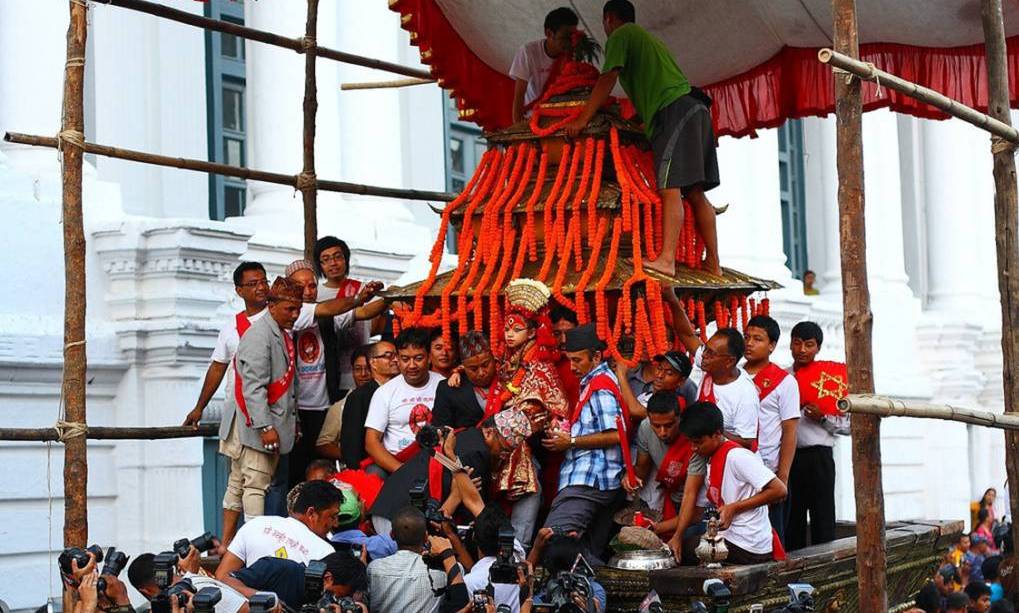
Nepalese celebrate Indra Jatra to pray to Lord Indra and Dagini for a good harvest and to remember the deceased from the previous year. The Yenya Festival is divided into two parts: Indra Jatra and Kumari Jatra. The flagpole function, blood sacrifice, and displays of Bhairava's masks are all part of the Indra Jatra festivities. During Kumari Jatra, the living goddess will be transported to Kathmandu by chariot. Thousands of people get there to take blessings from the living goddess and enjoy the festival as well.
Solar Calendar- August- September
Nepali Lunar Calendar - Bhadra
Teej (Hartalika Teej) Women’s Festival
Teej, affectionately known as the Women's Festival, unfolds its vibrant celebrations in Nepal from the second to the fifth day following the new moon in the Nepali calendar month of Bhadra. While the festival is celebrated across the country, it holds a particularly special place in the vicinity of the revered Pashupatinath Temple.
Over the course of three exuberant days, Nepalese women adorn themselves in resplendent red sarees, embellished with red tika, and a harmonious chorus of bangles. The streets come alive with their graceful dance and melodious songs as they visit temples, their hearts filled with celestial joy.
For married women, Teej is a moment to beseech the blessings of Lord Shiva for the happiness and well-being of their life partners and children. It's a time for spiritual reflection and a quest for refinement of body and spirit. For unmarried women, Teej symbolizes the hope of finding a respectable spouse. Consequently, this festival holds immense significance for Nepali women, representing their aspirations, dreams, and the strength of their bonds.

The name Hartalika carries a story of its own, composed of "Harit," meaning kidnapping, and "Aalika," connoting female companionship. In Hindu mythology, the festival is associated with the enchanting tale of Goddess Parvati, who took the form of Shailaputri, a Himalayan girl. She made a promise of her hand in marriage to Lord Vishnu on the advice of the sage Naradmuni. Learning of this promise, Parvati's friends whisked her away to a dense forest to protect her from this union. Deep in the jungle, Parvati implored the Shiva Linga to disappear from her thoughts and fervently prayed on the third day of Bhadrapud. Her devotion pleased Lord Shiva, who ultimately agreed to marry her.
Teej is not just a festival; it is a multi-day celebration that includes lavish feasting, often referred to as 'DAR,' followed by a period of strict fasting. On the first day of the festival, the mother of a married girl presents her with gifts, including sarees, food, and jewelry. It is firmly believed that the celebration of Teej ensures the longevity of a woman's husband and fosters a long-lasting and harmonious marital connection. Traditional dances and melodious music form an integral part of Teej celebrations, adding a delightful layer of cultural richness to this cherished festival.
Solar Calendar- August- September
Nepali Lunar Calendar - Bhadra
Dashain
Dashain, also known as Vijaya Dashami, is Nepal's longest and most auspicious holiday, lasting 15 days. This festival is held to commemorate the goddess Durga's victory over evil Mahishasura and the nine forms of the goddess Maa Durga. And it is also believed that Dashain is also the victory of Lord Ram over Ravana. During this auspicious festival, a large number of animals are sacrificed. Furthermore, people who live far away from home would return home for a family gathering. Beautiful kites will be flying in the azure sky, and youngsters will be swinging on the swings.
Dashain is the most auspicious and anticipated festival in Bhutan, Myanmar, and a few regions in Northern India, in addition to Nepal. It is celebrated during the Ashwin/Ashoj month (late September and early October).
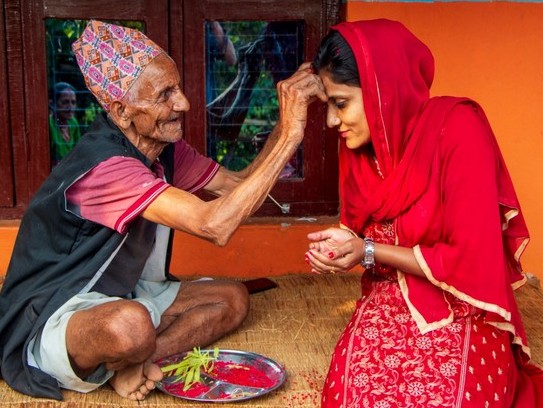
During Dashain, all government offices, instructional spaces, and other private offices are closed. Dashain is celebrated in September or October, starting with the Sukla paksha, Ashwin's bright lunar fortnight, and ending with Purnima, the full moon day. Even though Dashain lasts 15 days, the first (Ghatasthapana), seventh(Phulpati), eighth(Maha Ashtami), ninth(Maha Navami), and tenth(Vijaya Dashami) days are the most significant. The tenth day of Dashain is the most significant of the 15 days. Everyone in the family receives a red tike as well as blessings from the elders. Dashain's red tika represents a family's blood connections.
Solar Calendar- September- October
Nepali Lunar Calendar - Ashoj
Tihar (Deepawali)
Tihar is considered Nepal's second most important celebration festival after Dashain. Candles, lights, colorful Rangolis, and flowers are the main part of the festivity. During this festival, people clean and adorn their homes. People worship a few animals, such as crows, dogs, cows, and bullocks, during this festival. To invite Lakshmi, the goddess of abundance and fortune, all the dwellings are cleaned and brightened with candles and magnificent lights on the fourth day. That is why it is also known as the Festival of Lights in Nepal.

Tihar is a 5-day festival that differs from Dashain. Tihar is praised for lightening up the house and putting Saptarangi (7 coloreds) tika from siblings, just as Dashain is honored by elders by applying tika and jamara on the forehead. After Dashain, Tihar is celebrated fifteen days later. Kaag Tihar, Kukur Tihar, Laxmi Puja, Gobardhan Puja, and Bhai Tika are the five days of Tihar. Tihar is sometimes referred to as Yama Panchak because it is a multi-day festival. It is recommended for late autumn and early winter. People light candles, sing deusi bhailo melodies, dance and play cards, and finally put colorful tika with makhamali mala on their doors. Tihar begins with Kaag Tihar in Kartik Krishna Paksha's Trayodashi and finishes with Bhai Tika in Kartik Sukla Paksha's Dwitiya. It occurs between late October and early November, lasting five days, and is famed for its bright, joyful lights.
Solar Calendar- October- November
Nepali Lunar Calendar - Kartik
Lhosar (Tibetan New Year)
The Tibetan new year, Lhosar is made up of two words: Lho, which means year, and sar, which means new. Lhosar, or Tibetan New Year, is one of Nepal's most popular celebrations, with different groups celebrating it on different days. The Gurung community celebrates Tamu Lhosar, whilst the Tamang and Yolmo communities celebrate Sonam Lhosar. The Tibetan and Sherpa populations are aware of the third variety, Gyalbo Lhosar. Dance, music, family get-togethers, and sharing greetings and gifts mark the start of the new year. During this holiday, families worship together and prepare special dishes for the gods and goddesses. During Lhosar, it is customary to drink changkol, a Tibetan drink similar to beer derived from chhaang.

Sherpa and Tamang people commemorate it in Bodhnath Stupa, Swayambhunath, Tibetan people group in Jawalakhel, and the Solu Khumbu region. During this occasion, the Tibetan people as a whole enjoy the pleasant atmosphere with the whole community and their loved ones.
Solar Calendar- January- February
Nepali Lunar Calendar- Magh
Maha Shivaratri
Shivaratri, also known as Shiva's Night, is an auspicious occasion devoted to the worship of Lord Shiva, revered as the supreme deity in Hindu mythology. According to Hindu beliefs, Shivaratri aligns with a celestial alignment that elevates spiritual energy, making it a night of profound significance. This sacred observance unfolds during Nepal's Falgun month, nestled between the months of February and March.
The Pashupati Temple in Nepal attracts a substantial gathering of Hindu devotees from across the globe. It's a time when Sadhus, ascetic holy men, often embark on journeys to Nepal, choosing to reside in the sacred precincts of Pashupatinath in the days leading up to or following Shivaratri. The sight of these Sadhus during Shivaratri is nothing short of captivating—many are attired in minimal clothing, with some even entirely naked, a vivid representation of their devotion to Lord Shiva.
An intriguing aspect of Shivaratri in Nepal is the open display of marijuana and cannabis, despite their legal prohibition in the country. These substances are openly offered to Lord Shiva and his devotees as a sacred offering during the festivities.
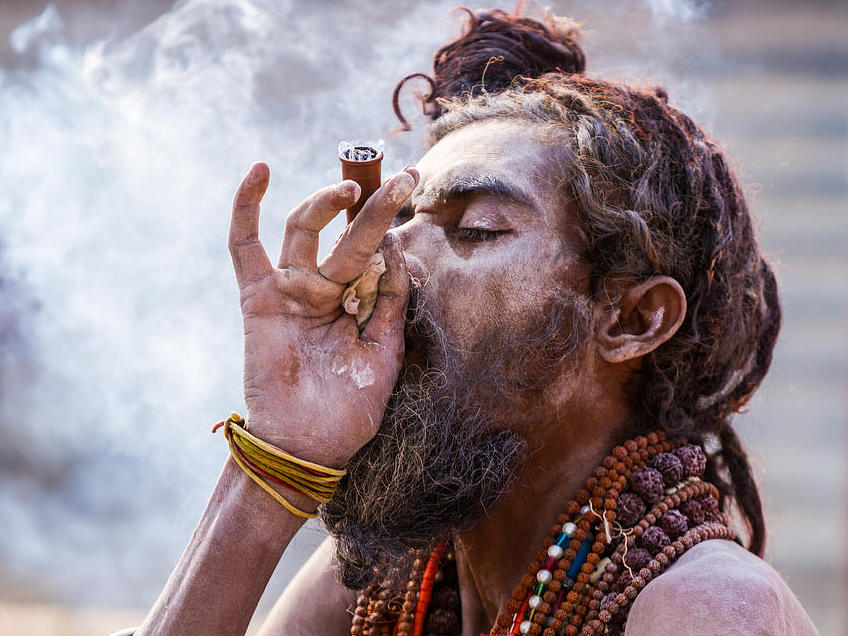
Maha Shivaratri, the grander version of Shivaratri, is a Hindu festival celebrated with fervor by Hindus in Nepal and India. According to the Nepali lunar calendar, Maha Shivaratri coincides with the new moon in the Falgun month. Shiva temples across the region host various ceremonies, but the spectacle at the Pashupatinath Temple is particularly magnificent.
The entire precinct of Pashupatinath Temple is adorned with a profusion of vibrant flowers and radiant lights. Throughout the night, continuous chants and prayers to Lord Shiva resonate through the sacred space. A multitude of devoted priests from various corners of Nepal and India converge here to conduct elaborate poojas, marking the grandest celebration of Lord Shiva's divine night
Solar Calendar- February- March
Nepali Lunar Calendar - Falgun
Fagu Purnima (Holi)
Fagu Purnima, more commonly known as Holi, stands as one of the most renowned and cherished festivals, captivating the hearts of both local and international revelers. This exuberant celebration is steeped in Hindu mythology, much like many other festivals in Nepal, and symbolizes the triumph of good over evil.
At the core of Holi lies the legend of Holika, a mythical demon. The festival draws its roots from Hindu mythology and the epic tale of Prahalad, a young devotee of Lord Vishnu. Prahalad's unwavering faith incurred the wrath of his father, Demon King Mahisasur, who perceived Lord Vishnu as his arch-nemesis. Fueled by anger, the demon king instructed his sister, Holika, who possessed immunity to fire, to annihilate his own son. In a miraculous turn of events, Holika perished while carrying Prahalad into the flames, but the young devotee emerged unscathed. Holi, the festival of colors, rejoices in this divine intervention and marks the victory of good over evil.

This joyous festival unfolds in the late days of February or early March each year, signaling the advent of spring and the impending end of the dry season. Holi is a celebration that transcends age and is particularly beloved among the youth. Its lively spirit bears resemblance to the Songkran Festivals of Thailand and Myanmar, characterized by exuberant water festivities.
The Nepali month of Fagu sees the full moon, serving as the backdrop for Holi's colorful revelry. As people douse each other with vibrant hues, the splashes of water signify the approaching rainy and summer seasons, bidding farewell to the dry spell.
Holi's festivities extend over two days in Nepal. The hills resonate with jubilant celebrations on the first day, followed by the Terai region's exuberant revelry on the second day. The festival is marked by the lively sounds of live music, concerts, and a kaleidoscope of colors adorning the streets and squares of Kathmandu, including the vibrant durbar square. Holi is a time of pure, unbridled joy and communal celebration, where differences blur amid the kaleidoscope of colors, creating cherished memories for all who partake in this jubilant occasion.
Solar Calendar- February- March
Nepali Lunar Calendar - Falgun
Ram Navami
Ram Navami, a renowned Hindu festival, is celebrated with great fervor by the Hindu community in Nepal. This auspicious occasion falls on the Navami (ninth day) of the Shukla Paksha (bright half) in the month of Chaitra, as per the Hindu calendar. At the heart of Ram Navami lies the veneration of Lord Ram, the seventh avatar of the Hindu god Vishnu. This joyous celebration symbolizes the triumph of truth over evil and pays tribute to the memory of Lord Ram.
Ram Navami marks the divine moment when Lord Vishnu took on the earthly form of Ram, born to King Dasharatha and Queen Kausalya in the ancient city of Ayodhya, during the Treta Yuga. The festival is a beautiful tapestry of spiritual significance and cultural heritage. On this sacred day, devotees engage in Ram Katha recitals, narrating the epic Ramayan, which narrates the life and adventures of Lord Ram. These recitations serve as a means of passing down the timeless wisdom and teachings found within this sacred text.
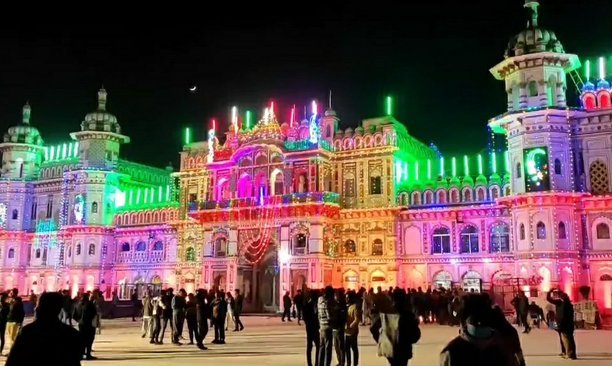
The celebrations of Ram Navami are not confined to one place; they resonate across the nation. The city of Janakpur, known as the hometown of Goddess Sita (the wife of Lord Ram), takes center stage in these festivities. The Janaki Temple, adorned with flowers and illuminated with lights, becomes the epicenter of devotion and jubilation. A grand procession featuring elephants, bullock carts, and an assembly of up to 100,000 pilgrims converges in the city. Amidst a sea of joyful devotees, hymns of praise are sung, and dance becomes a form of devotion as everyone rejoices in celebration of the divine grace of Lord Ram on Ram Navami
Solar Calendar- March- April
Nepali Lunar Calendar - Chaitra
For other tour plans kindly click here
If you need any further information, please contact us, Email: [email protected], Phone: +977- 985 100 5129 (WhatsApp)
#Tags
Tripadvisor
5.0928 reviewsGoogle
4.8114 reviewsFacebook
4.1 recommend44 ReviewsTrustpilot
4.1 Great(5 reviews)- Trusted by50K plus traveller




